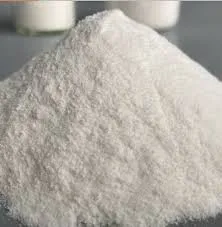
Dec . 01, 2024 11:04 Back to list
hpmc grades
Understanding HPMC Grades A Comprehensive Overview
Hydroxypropyl Methylcellulose (HPMC) is a cellulose derivative widely used in various industries, particularly in pharmaceuticals, food, cosmetics, and construction. Its unique properties, such as water solubility, film-forming ability, and high viscosity at low concentrations, make HPMC a versatile ingredient. However, not all HPMC is created equal; it comes in different grades tailored for specific applications. This article delves into the various HPMC grades, their characteristics, and their applications.
What is HPMC?
HPMC is a semi-synthetic polymer derived from cellulose. The modification process introduces hydroxypropyl and methyl groups, enhancing its solubility in water and organic solvents. This modification not only affects the physical and chemical properties of cellulose but also expands its functional capabilities, making HPMC suitable for a broad range of applications.
Classification of HPMC Grades
HPMC grades are classified based on their viscosity and substitution patterns. The viscosity of HPMC solutions is crucial, as it determines the thickness and texture of the final product. Generally, HPMC grades are characterized by their numerical viscosity designation, where the number indicates the viscosity of a 2% solution at 20°C measured in millipascal-seconds (mPa·s).
1. Low Viscosity Grades These grades, typically ranging from 1,000 to 5,000 mPa·s, are suitable for applications requiring a thin consistency. They are commonly used in cosmetic formulations and as film formers.
2. Medium Viscosity Grades Ranging from 5,000 to 15,000 mPa·s, medium viscosity grades are perhaps the most versatile and widely used. They find applications in pharmaceuticals as binders and fillers in tablet formulations, as well as emulsifying agents in food products.
3. High Viscosity Grades These grades exceed 15,000 mPa·s and are ideal for applications requiring thickening agents. In construction, they are used in dry-mix mortars to enhance workability and water retention.
4. Extra-High Viscosity Grades Some specialty applications call for even thicker solutions with viscosities over 100,000 mPa·s. These grades are typically used in specialized industrial applications.
Key Properties of HPMC Grades
hpmc grades

Regardless of the specific grade, HPMC exhibits several key properties that are critical for its functionality
- Water Solubility HPMC is soluble in both hot and cold water, making it an excellent choice for various aqueous formulations. - Thermal Stability HPMC retains its characteristics over a wide range of temperatures, adding to its appeal in thermal processing applications.
- Non-Ionic Nature The non-ionic nature of HPMC makes it compatible with a variety of other ingredients, thus broadening its applicability across multiple sectors.
- Biodegradability Being a cellulose derivative, HPMC is biodegradable and thus an environmentally friendly option, which is becoming increasingly important in today’s eco-conscious market.
Applications of Different HPMC Grades
1. Pharmaceuticals HPMC is extensively used as a binder and release agent in tablet formulations. Depending on the required release profile, different grades may be selected to either prolong or accelerate the dissolution of active ingredients.
2. Food Industry In food products, HPMC serves as an emulsifier, thickener, and texturizer. Low to medium viscosity grades are typically used to enhance the texture and stability of sauces, dressings, and dairy products.
3. Cosmetics In cosmetic formulations, HPMC is used as a thickening agent and stabilizer in products like creams, lotions, and gels. Its ability to form a smooth film makes it suitable for skincare and haircare products.
4. Construction HPMC is a key component in dry-mix mortars, providing workability, water retention, and adhesion properties, ensuring durability and performance of construction materials.
Conclusion
In conclusion, understanding the various grades of HPMC is essential for selecting the appropriate type for specific applications. Each grade offers unique characteristics suited to particular needs across multiple industries. As research and development continue in the field, HPMC's versatility is likely to expand, making it an essential ingredient in innovative products. Whether in pharmaceuticals, food production, cosmetics, or construction, HPMC remains a favored choice due to its reliable performance and adaptability.
-
Versatile Hpmc Uses in Different Industries
NewsJun.19,2025
-
Redispersible Powder's Role in Enhancing Durability of Construction Products
NewsJun.19,2025
-
Hydroxyethyl Cellulose Applications Driving Green Industrial Processes
NewsJun.19,2025
-
Exploring Different Redispersible Polymer Powder
NewsJun.19,2025
-
Choosing the Right Mortar Bonding Agent
NewsJun.19,2025
-
Applications and Significance of China Hpmc in Modern Industries
NewsJun.19,2025







